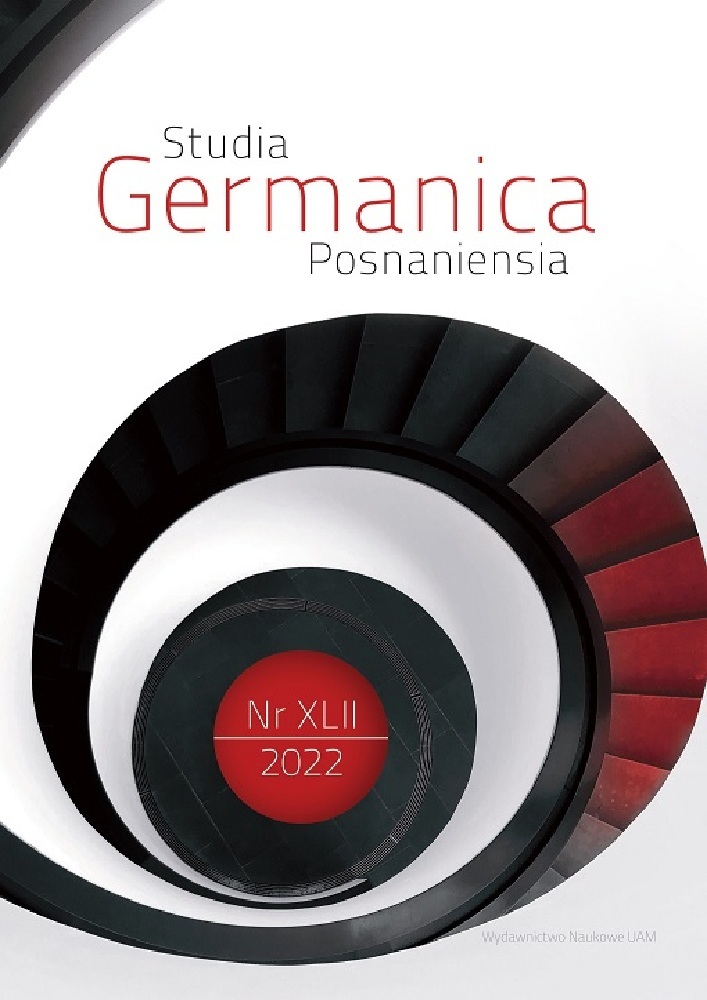Abstract
The picture book Flotsam depicts a boy who meets animals at a beach and finds an analog camera as flotsam, with which he discovers a peculiar underwater world. In the book, human-animal-relations are reflected dialectically in the context of visual perception with art, namely photography and fine arts, as well as literature, being used as the medium of reflection.
References
Arizpe, E. & McAdam, J. (2011). Crossing visual borders and connecting cultures: Children’s responses to the photographic theme in David Wiesner’s Flotsam. New Review of Children’s Literature and Librarianship, 17 (2), 227-243. DOI: https://doi.org/10.1080/13614541.2011.624969
Berger, J. (2009). Why look at Animals? In J. Berger, About looking (S. 3-28). London: Bloomsbury.
Böger, A. (2015). Die amerikanische Fotografie. In C. Decker (Hrsg.), Visuelle Kulturen der USA. Zur Geschichte von Malerei, Fotografie, Film, Fernsehen und Neuen Medien in Amerika (S. 99-159). Bielefeld: transcript. DOI: https://doi.org/10.1515/9783839410431-003
Braidotti, R. (2014). Posthumanismus. Leben jenseits des Menschen. Frankfurt a. M.: Campus.
Cartwright, J.H.E. & Nakamura, H. (2009). What kind of a Wave is Hokusai’s Great wave off Kanagawa? Notes and records of the Royal Society of London, 63 (2), 119-135. DOI: https://doi.org/10.1098/rsnr.2007.0039
Collins, D. (1990). The story of Kodak. New York: Abrams.
Heidegger, M. (1985). Unterwegs zur Sprache. Gesamtausgabe. Bd. 12: Abt. 1, Veröffentlichte Schriften 1910-1976. Frankfurt a. M.: Vittorio Klostermann.
Herbrechter, S. (2009). Posthumanismus. Eine Kritische Einführung. Darmstadt: WGB.
Katsushika, H. Unter der Welle bei Kanagawa, 36 Ansichten des Berges Fuji [Serientitel], um ca. 1830–32, Farbholzschnitt, 25.7 x 37.9 cm, The Metropolitan Museum of Art, aus: The Metropolitan Museum of Art, Abgerufen von https://www.metmuseum.org/art/collection/search/45434.
Kübler, R. (1970). Der Bilderrahmen im Lichte seiner wichtigsten Funktionen. Tübingen: Eberhard-Karls-Universität.
MacGregor, A. (1994). Die besonderen Eigenschaften der „Kunstkammer“. In A. Grote (Hrsg.), Macrocosmos in Microcosmo: die Welt in der Stube; zur Geschichte des Sammelns 1450 bis 1800 (S. 61-106). Opladen: Leske und Budrich.
McCloud, S. (1994). Understanding Comics: The invisible art. New York: Harper Perennial.
Melville, H. (2009). Moby-Dick. Frankfurt a. M.: Fischer. DOI: https://doi.org/10.1093/owc/9780199535729.003.0044
Pomian, K. (1994). Sammlungen – eine historische Typologie. In A. Grote (Hrsg.), Macrocosmos in Microcosmo: die Welt in der Stube; zur Geschichte des Sammelns 1450 bis 1800 (S. 107-126). Opladen: Leske und Budrich.
Smith, V. (2009) Making and breaking frames: Crossing the borders of expectation in picturebooks. In J. Evans (Hrsg.), Talking Beyond the Page: Reading and Responding to Picturebooks (S. 81-96). London: Routledge. DOI: https://doi.org/10.4324/9781003061151-7
Sontag, S. (1978). Über Fotografie. München und Wien: Carl Hanser.
Stadler, U. (2003). Der technisierte Blick. Optische Instrumente und der Status von Literatur; Ein kulturhistorisches Museum. Würzburg: Königshausen & Neumann.
Struck, W. (2017). A World Without Us: Aesthetic, Literary, and Scientific Imaginations of Nature Beyond Humankind. In S. Wilke & J. Johnstone (Hrsg.), Readings in the anthropocene: the environmental humanities, German studies, and beyond (S. 17-37). New York: Bloomsbury Academic.
Waldow, S. (2015). Einleitung. In S. Waldow (Hrsg.), Von Armen Schweinen und Bunten Vögeln (S. 7-16). Paderborn: Fink. DOI: https://doi.org/10.30965/9783846757772_002
Weigl, E. (1990). Instrumente der Neuzeit. Die Entdeckung der modernen Wirklichkeit. Stuttgart: J.B. Metzler. DOI: https://doi.org/10.1007/978-3-476-03323-9
Wiesner, D. (2006). Flotsam. New York: Clarion Books.
Zapf, H. (2002). Literatur als kulturelle Ökologie: zur kulturellen Funktion imaginativer Texte an Beispielen des amerikanischen Romans. Tübingen: Niemeyer. DOI: https://doi.org/10.1515/9783110946734
License
Copyright (c) 2022 Qingyu Cai

This work is licensed under a Creative Commons Attribution-NoDerivatives 4.0 International License.
